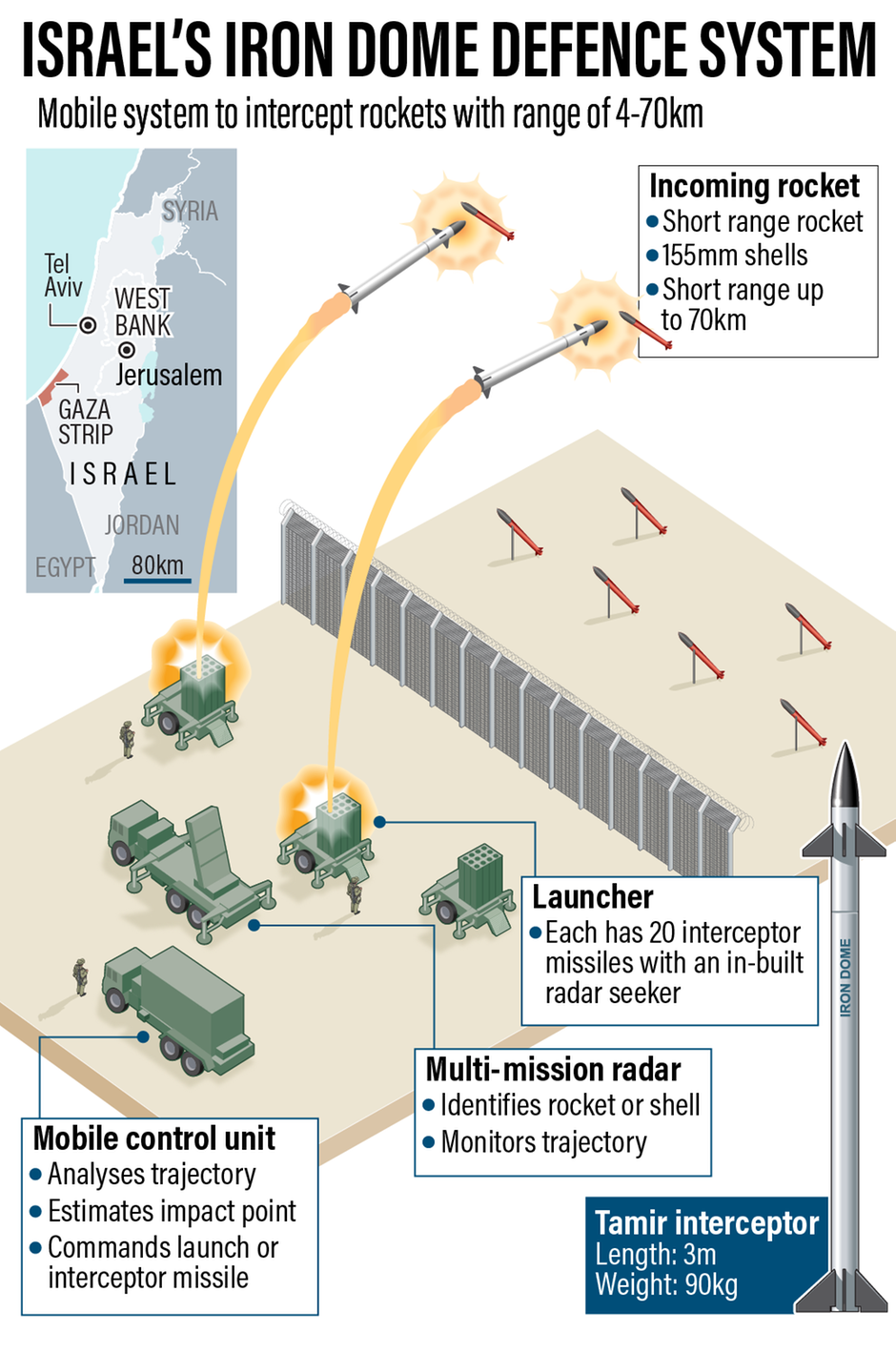Israel’s Air Defence System | 19 Apr 2024
Why in News?
Recently, Israel's multi-layered air defence system defended the country from a major attack, as Iran launched over 300 armed drones and long-range missiles.
What are the Key Facts About Israel's Air Defense System?
- Air defence systems are basically shields against threats from the sky. They are a combination of different technologies that work together to spot, track, and destroy incoming aircraft, missiles, or drones.
- Israel's air defense system consists of Iron Dome and C-Dome.
- Iron Dome:
- It is a short-range, ground-to-air, air defence system of Israel.
- The Iron Dome has three main systems that work together to provide a shield over the area where it is deployed.
- Radar: It has a detection and tracking radar to spot any incoming threats.
- Weapon Control: It has a battle management and weapon control system (BMC).
- Missile Fire: It also has a missile firing unit. The BMC basically liaises between the radar and the interceptor missile.
- It is used for countering rockets, artillery & mortars as well as aircraft, helicopters and Unmanned Aerial Vehicles (UAV).
- It is capable of being used in all weather conditions, including during the day and night. It claims a success rate of over 90%.
- It can protect deployed and manoeuvring forces, as well as the forward operating base (FOB) and urban areas, against a wide range of indirect and aerial threats.
- C-Dome:
- It is a naval version of Israel’s Iron Dome air defence system, used to shield against rocket and missile attacks.
- It was first unveiled in 2014 and declared operational in November 2022.
- It works similarly to the Iron Dome, except that it is mounted on ships.
- It is mounted on Sa’ar 6-class corvettes, and German-made warships, and uses the same interceptor as the Iron Dome.
- Unlike the Iron Dome, which has its dedicated radar, the C-Dome is integrated into the ship’s radar to detect incoming targets.
- It ensures full-circular vessel protection and high kill probability against a full spectrum of modern threats—maritime and coastal.
Similar Air Defense System of India:
- Indrajaal:
- India’s first indigenous drone defence dome called “Indrajaal” was designed and developed by Hyderabad-based technology R&D firm Grene Robotics.
- It has the capability to autonomously protect an area of 1000-2000 sq km against the aerial threats by assessing and acting on aerial threats such as Unmanned Aerial Vehicles (UAVs), loitering munitions, and Low- Radar Cross Section (RCS) targets.
- It will not only provide protection to defence bases but it will be beneficial for linear infrastructures like international borders against advanced weaponry.
- S-400 Triumf Missile System:
- The S-400 Triumf is a mobile, surface-to-air missile system (SAM) designed by Russia. It is one of the most dangerous operationally deployed modern long-range SAM (MLR SAM) in the world, considered much ahead of the US-developed Terminal High Altitude Area Defense System (THAAD).
- The system can engage all types of aerial targets including aircraft, unmanned aerial vehicles (UAV) and ballistic and cruise missiles within a range of 400km, at an altitude of up to 30km.
- The system can track 100 airborne targets and engage six of them simultaneously.
Read More: Iron Dome, Israel-Palestine Conflict
UPSC Civil Services Examination, Previous Year Questions (PYQs)
Prelims:
Q 1. Which one of the following countries of South-West Asia does not open out to the Mediterranean Sea? (2015)
(a) Syria
(b) Jordan
(c) Lebanon
(d) Israel
Ans: (b)
Mains:
Q1. ‘Too little cash, too much politics, leaves UNESCO fighting for life.’ Discuss the statement in the light of US’ withdrawal and its accusation of the cultural body as being ‘anti-Israel bias’. (2019)
Q2 . “India’s relations with Israel have, of late, acquired a depth and diversity, which cannot be rolled back.” Discuss. (2018)

